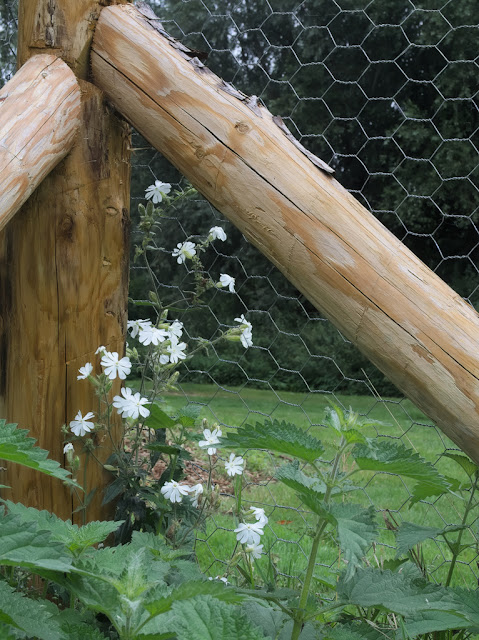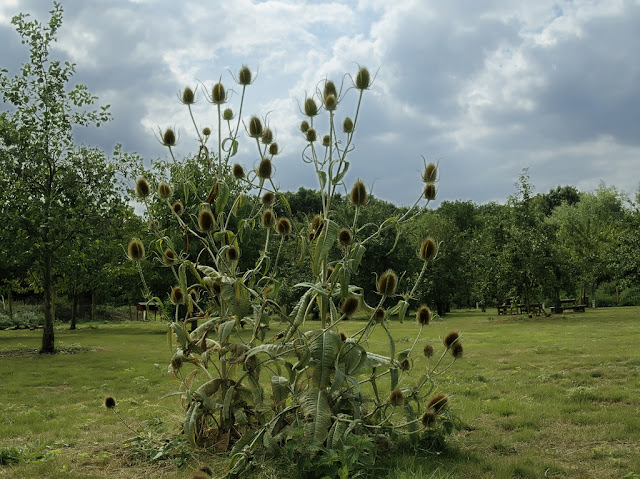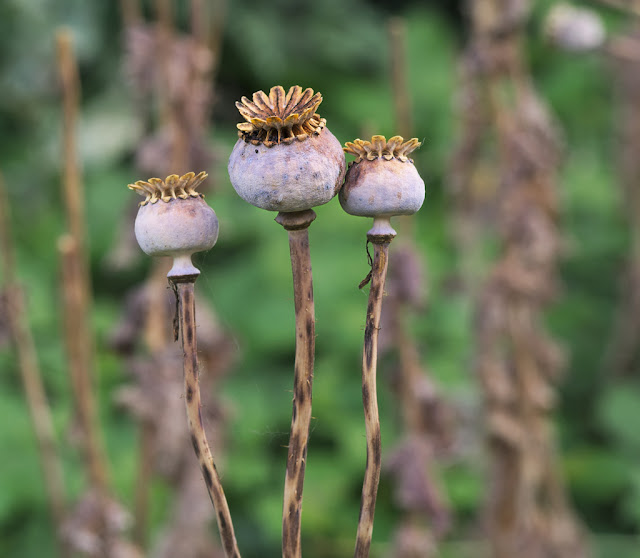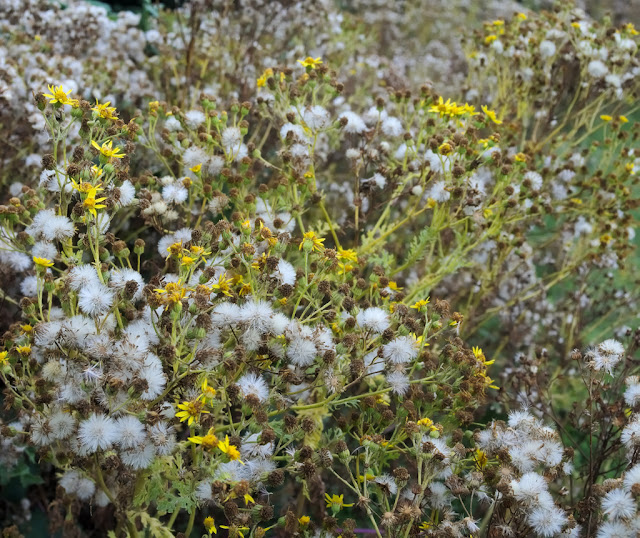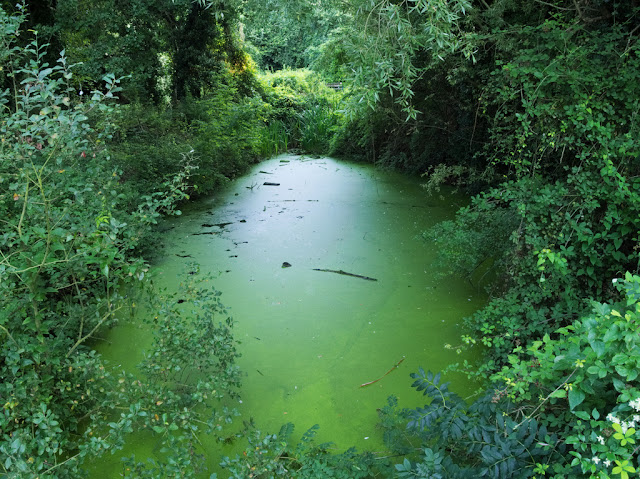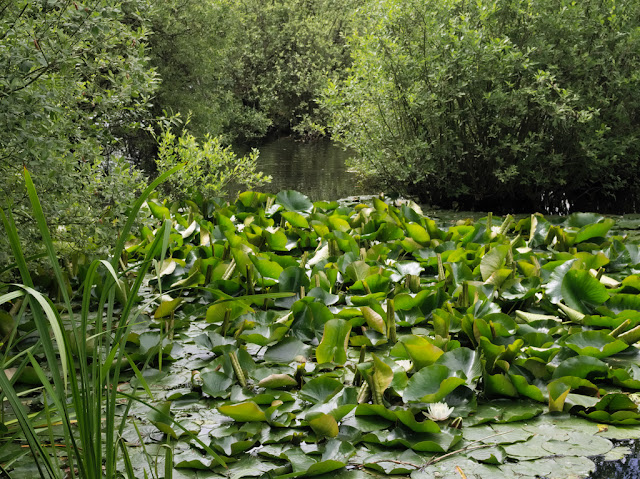If you allow yourself to be enchanted
by the beauty to be seen in even ordinary things,
then all things will
prove to be extraordinary
Dean Koontz
I came across this quotation on the website of nature photographer Mike Backman , and it seemed so perfectly to sum up everything I am trying to achieve that I thought it worthwhile of repetition at the head of this post.
I have used intimate landscapes extensively throughout this blog. In my previous post 'Intimate Landscapes', I discussed my use of intimate landscapes to show flowers in their environment rather than as isolated portraits such as you may find in textbooks. In this post, I want to highlight the use of this technique to document plant communities in Milton Country Park.
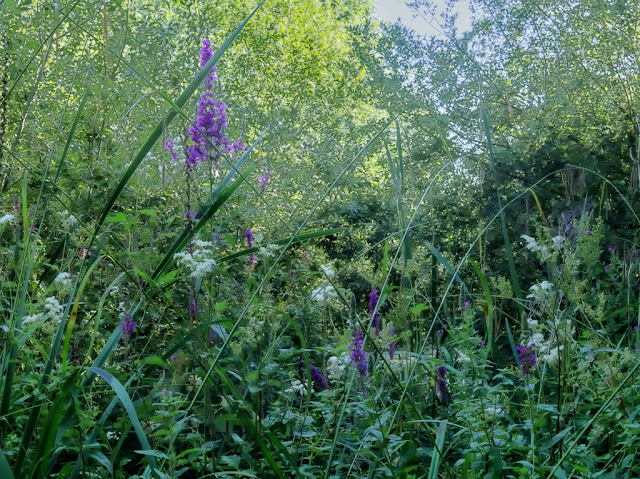 |
| Dickerson's Pit - 9 August 2015 |
I think of looking at intimate landscapes of a locality as the equivalent of close reading of a novel: the detailed examination of the book adds to the richness of the experience of the book and exposes the nuances and subtleties that may otherwise be missed. In the case of these landscapes, which are all taken of the ground cover, what may be taken at first sight to be a fairly homogenous green with a few flowering highlights, is exposed as a far richer tapestry of different colours and textures.
My first image is of purple loosestrife and meadow sweet growing together in a small inlet off the western edge of Dickerson's Pit. Besides these two more obvious flowers, two types of reeds and a few pink willow herb flowers can be seen. Elsewhere in the park on the eastern edge of Todd's Pit there was as similarly attractive patch of purple loosestrife contrasting with yellow flowers of common fleabane.
 |
| Path to South of Remembrance Meadow - 8 June 2015 |
Earlier in the year, the path that runs south of Remembrance Meadow was edged with the white flowers of hoary cress. Closer inspection shows the different textures in this community: the frothy white flower heads, the lacework of hemlock leaves, the entire leaves of the hoary cress and the threads of the grasses. Growing through all this are the purple spotted stalks of the hemlock.
 |
| North of Park - 28 August 2015 |
Another smorgasbord of differing textures, leaf shapes and shades of green is provided in this image taken at the side of a path in the north of the park. The large burdoch leaf is surrounded by nettles, convolvulus, and hedge parsley.
Images like this make me wonder about the evolution of leaf shapes. A search on the web revealed that this is a field of active research and many theories. Theories include the development of leaf shape to avoid being eaten (apparently finely divided leaves make for less efficient grazing), or to maximise light interception. It seems to me that the huge leaves of the burdoch must act as a mulch and inhibit anything at all from growing beneath the plant.
 |
| Todd's Pit - 28 August 2015 |
In contrast to the previous photograph, here a much simpler community provides a strong contrast between the needle-like leaves of the horsetails and the broad leaves of the bramble.
 |
| Hall's Pond - 3 September 2015 |
The rotting logs in the park have a typical flora consisting of moss, ivy and herb robert, all seen in this image taken beside the path west of Hall's Pond. Here the plants compete with richly chestnut coloured bracket fungus.
In the Woods
 |
| East Bank of Dickerson's Pit - 30 August 2015 |
In complete contrast to the rich and varied plant communities in the open ground, in the woods a single plant - bramble - is all conquering and grows over everything. The only relief from the brambles are the tree trunks.
Books and Blogs
I have already mentioned Mike Backman's site.
I feel, probably with good justification, that this project has horribly exposed my lack of knowledge of the flowering plants. To improve this situation, I have purchased 'The Wild Flower Key' by Francis Rose. As the title suggests, it is a key to the wild flowers of the United Kingdom. With my botanical knowledge, using the key is almost impossibly hard, but, with selective looking ahead at the excellent illustrations, I am slowly beginning to identify a few flowers.
One blog that particularly caught my eye is Caught by the River, a collaboration between writers, poets, musicians, artists, film makers and photographers, all of whom share an interest in the landscape and nature. I think it is a great pity that there are not more of such collaborations around, instead of the sort of industrialised separation of medium in which blogs are strictly one medium affairs: writers, artists and photographers must never meet on the same URL. To that end, I would be pleased to hear from any artists, writers, or poets would be interested in joining me in such a collaboration.
Next: The Orchard

